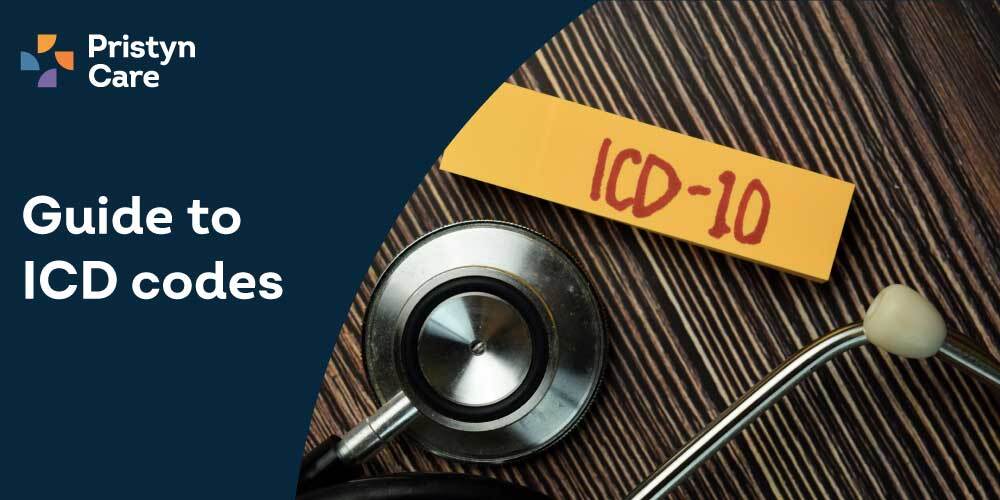
Table of Contents
What are ICD codes?
ICD codes stand for ‘International Classification of Diseases’. These are standardized codes that are used globally for epidemiology, clinical treatment, and health management. The codes are published, maintained, and updated by WHO (World Health Organization), the primary healthcare organization related to the United Nations.
Each revision of ICD codes is rolled out as a catalog that anyone can refer to and find out the exact nature of the disease. The most up-to-date version is ICD-11 which came into effect on January 1, 2022. However, since most healthcare centers only officially adopted ICD-10 in 2015 and are still getting used to it, the application of ICD-11 may still take another 5 to 10 years at least.
How are ICD codes used?
The ICD codes are used to broadly classify all known health conditions, diseases, syndromes, etc., along with their variations, symptoms, abnormal findings, etc., using a string of 7 characters. Since they represent a standardized unit for disease classification, they can be used globally for mapping healthcare data and formulating worldwide statistics.
Thus, ICD codes are used worldwide for morbidity and mortality statistics, insurance reimbursements, and automated decision support in health care. ICD coding in healthcare is also commonly known as medical coding and is being rapidly adopted by most major healthcare groups/hospitals worldwide.
ICD-10 (International Classification of Diseases, Tenth Revision)
The ICD-10 catalog started being compiled in 1983 and officially came into effect on October 1, 2015. It contains over 68,000 unique codes, which is over 3 times the ICD-9 catalog. It has a couple of different variations depending on the country, such as ICD-10-AM in Australia and ICD-10-CA in Canada. It has worked wonders in increasing the quality, safety, and efficacy of healthcare services. It has helped with:
- disease and care process management
- improvement of claim reimbursements, including value-based reimbursements
- outcome measurements
- healthcare performance measurement
- identifying and using new medical technology, etc.
It has resulted in more accurate payments, and fewer rejected or fraudulent claims overall by providing a better understanding of diseases and procedures to non-medical professionals.
The ICD-10 catalog has two parts in the United States: ICD-10-CM (Clinical Modification) for diagnostic coding and ICD-10-PCS (Procedure Coding System) for inpatient hospital procedure coding.
How are ICD-10 codes formulated?
ICD-10 codes are alphanumeric, i.e., they are formed from 3 to 7 numbers and letters and correspond to the exact nature of the conditions, their location, and in some cases, their causes.
For example, if a patient with phimosis was to look up the corresponding ICD code for their problem, they would go to the N00-N99 range: Diseases of the genitourinary system. In this range, they would look at section N40-N53: Diseases of male genital organs. Next, they would look at N47: Disorders of prepuce. Finally, they would arrive at the ICD code N47.1: Phimosis.
ICD codes for the disorders of the penile foreskin (prepuce)
N47 Disorders of prepuce
- N47.0 Adherent prepuce, newborn
- N47.1 Phimosis
- N47.2 Paraphimosis
- N47.3 Deficient foreskin
- N47.4 Benign cyst of prepuce
- N47.5 Adhesions of prepuce and glans penis
- N47.6 Balanoposthitis
- N47.7 Other inflammatory diseases of prepuce
- N47.8 Other disorders of prepuce







